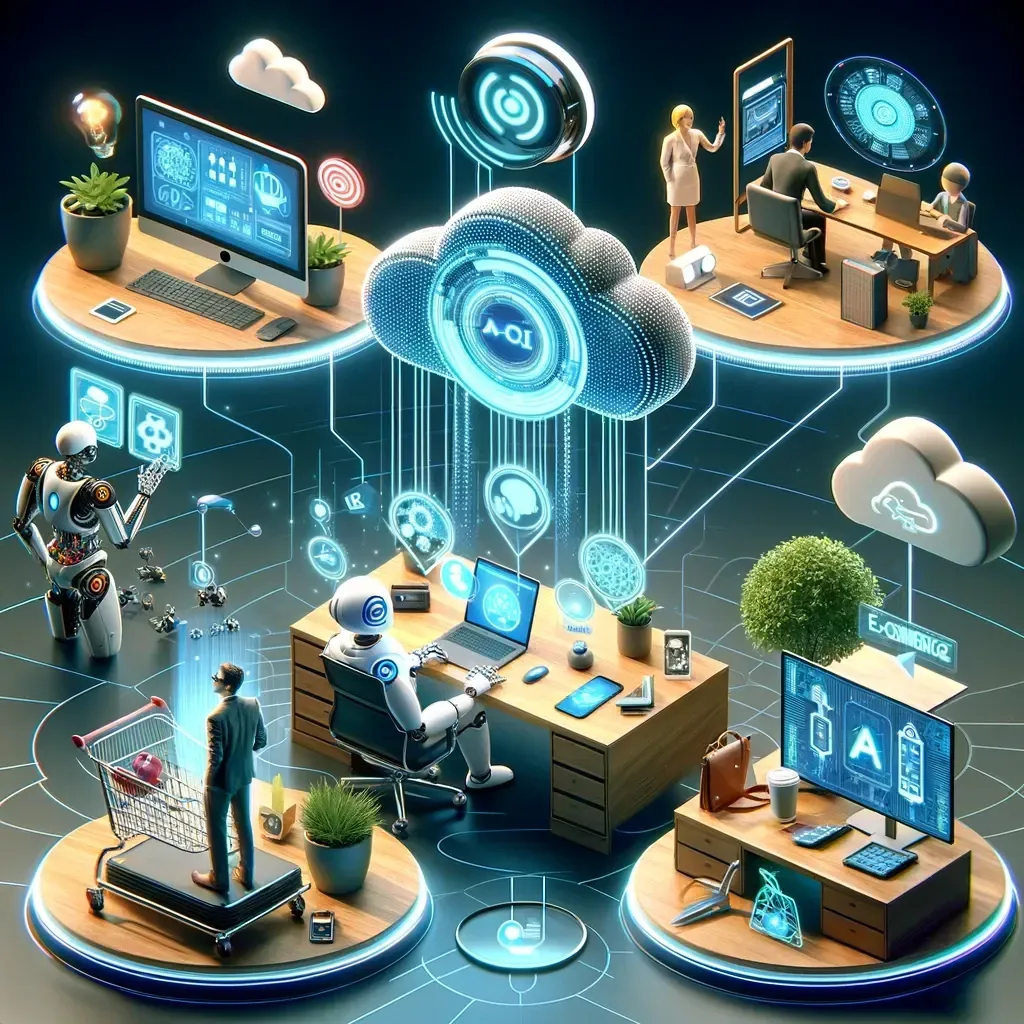Technology in 2025 reshapes how we work, learn, and connect, weaving digital capabilities into every corner of the economy. From AI-powered automation to edge computing, innovation now scales across industries with unprecedented speed; digital transformation 2025 is evolving into a data-driven culture where cloud-native platforms and data fabrics power smarter decisions. This shift enables new business models, improved customer experiences, and more resilient operations. In this era, organizations must balance speed with governance, data quality, and upskilling to turn disruption into sustainable advantage. Leadership that combines clear strategy with responsible innovation can translate rapid tech change into lasting value.
Viewed through alternative terminology, the same evolution signals a shift toward intelligent automation, pervasive connectivity, and data-driven leadership. Enterprises are adapting with autonomous systems, edge-to-cloud architectures, and resilient security models that tolerate disruption. The focus turns to governance, risk management, and digital literacy as prerequisites for sustained progress. In this framing, innovation is less about gadgets and more about orchestrating people, processes, and platforms to deliver measurable value.
Frequently Asked Questions
What is Technology in 2025 and why is it important for modern organizations?
Technology in 2025 represents a global shift driven by AI, cloud-native platforms, edge computing, and a renewed focus on security and governance. It enables data-driven decision making, faster digital transformation across industries, and more resilient operations. To thrive, organizations should pursue responsible AI, robust data governance, and agile, cloud-first strategies—hallmarks of Technology in 2025.
How does AI in 2025 reshape operations and governance for enterprises?
AI in 2025 is embedded into products, services, and daily workflows, supported by predictive analytics and intelligent automation. It drives efficiency but requires governance to manage bias, data quality, and accountability with transparency and explainability. Enterprises should implement risk controls, bias-mitigation, and cross-functional oversight to realize AI benefits responsibly.
What does digital transformation 2025 look like for data, apps, and experiences?
Digital transformation 2025 centers on data as a strategic asset, cloud-native architectures, and data sharing through data mesh and catalogs. It enables personalized, data-informed experiences and rapid experimentation. Successful digital transformation 2025 blends governance, analytics, and modular software to accelerate value delivery.
What cybersecurity challenges 2025 should organizations anticipate and plan for?
Cybersecurity challenges 2025 include AI-generated threats, supply chain risk, and increasingly complex networks. A secure, zero-trust posture with continuous monitoring and incident response is essential. Proactive governance and regular security testing help organizations stay ahead in Technology in 2025.
What opportunities in technology 2025 stand out for businesses?
Opportunities in technology 2025 include new business models like data-as-a-service, AI-enabled products, and security-as-a-service, as well as cross-sector innovation through shared platforms. Data-driven personalization and ecosystem partnerships unlock revenue and resilience. Firms that invest in data, analytics, and partnerships position themselves for growth in Technology in 2025.
What strategic actions should leaders take to align with tech trends 2025?
Leaders should build a resilient, data-driven foundation, prioritize AI governance, and accelerate secure, cloud-native delivery. They should invest in talent, partnerships, and sustainable IT practices to balance performance with efficiency. Embracing agile governance and continuous learning positions organizations to navigate tech trends 2025 effectively.
| Area | Key Points | Notes / Examples |
|---|---|---|
| Trends in Technology in 2025 | – Artificial intelligence and automation at scale: AI in core operations; generative AI; predictive analytics; automation; governance and responsible AI. – Digital transformation goes mainstream: data-driven culture; cloud-native architectures; data as a strategic asset; data sharing and governance. – Connectivity, edge computing, and distributed cloud: 5G, edge devices, low latency, real-time analytics, distributed workloads for resilience. – Sustainability, cybersecurity, and resilient tech ecosystems: energy-efficient software/centers, zero-trust security, monitoring, incident response. – The human factor: upskilling, agile culture, digital literacy, addressing talent gap. | |
| Opportunities in Technology in 2025 | – New business models and revenue streams: AI-enabled products, data monetization, data-as-a-service, platform plays. – Enhanced customer experiences through data and AI: predictive, personalized journeys, cross-functional orchestration. – Operational resilience and cost optimization: automation reduces waste, predictive analytics, autonomous systems, cost freeing capital. – Advanced security and risk management as a product: security-as-a-service, zero-trust, continuous compliance. – Industry acceleration and cross-sector innovation: cross-pollination among industries; shared platforms/APIs. | |
| Industry-specific implications | – Healthcare: AI-assisted diagnostics, telemedicine, remote monitoring; data privacy and regulatory compliance. – Finance: AI-driven risk, fraud detection, personalized planning; emphasis on compliance and privacy. – Manufacturing: Smart factories, digital twins, predictive maintenance; AI, IoT, robotics convergence. – Retail: Personalization, dynamic pricing, supply chain transparency and sustainability. – Education: Adaptive learning, digital collaboration tools; focus on in-demand skills and access. | |
| Strategic actions for technology leadership in 2025 | – Build a resilient, data-driven foundation: data governance, data mesh, lineage, privacy controls. – Prioritize AI governance and responsible innovation: ethics, bias mitigation, explainability, cross-functional governance. – Accelerate secure, cloud-native delivery: cloud-native practices, automation, zero-trust, monitoring, incident response. – Invest in people and partnerships: upskill staff, strategic recruitment, partnerships with providers, startups, research institutions. – Focus on sustainability and efficiency as strategic imperatives: energy-efficient architectures, green software, environmental and financial metrics. |
Summary
HTML table presented above summarizes the key points from the base content on Trends, Opportunities, Industry implications, and Strategic actions related to Technology in 2025. A concluding descriptive paragraph follows, emphasizing the evolving landscape and strategic approaches for Technology in 2025.


